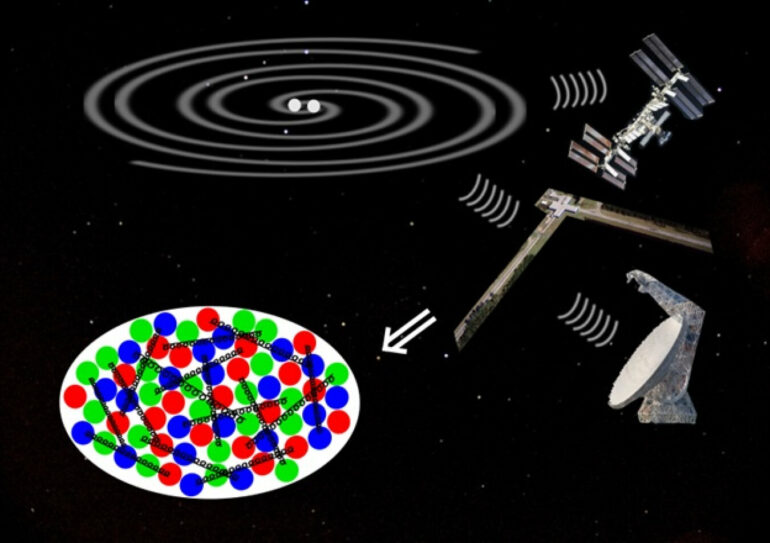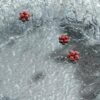At extremely high densities, quarks are expected to form pairs, as electrons do in a superconductor. This high-density quark behavior is called color superconductivity. The strength of pairing inside a color superconductor is difficult to calculate, but scientists have long known the strength’s relationship to the pressure of dense matter. Measuring the size of neutron stars and how they deform during mergers tells us their pressure and confirms that neutron stars are indeed the densest visible matter in the universe.
In a recent study, researchers used neutron star observations to infer the properties of quark matter at even higher densities where it is certain to be a color superconductor. This yields the first empirical upper bound on the strength of color superconducting pairing.
The work is published in the journal Physical Review Letters.
Measurements from NICER, LIGO/Virgo, and ground-based radio telescopes provide insight into the pressures and densities at the cores of various neutron stars, each with some uncertainty. In this study, researchers performed a statistical analysis of these measurements to extract a range of possible pressures at quark-matter densities.
Scientists know what the pressure of quark matter at these high densities would be without considering quark pairing, so the range of possible deviation from that baseline provided this study’s researchers with the range of pairing effects that are consistent with the neutron star observations. This allowed the researchers to extract empirical bounds on the strength of color superconducting pairing.
Theoretical physicists have studied color superconductivity for more than two decades. However, this study’s connection to neutron star observations is the first-ever empirical limit on the pairing strength of color superconductors. This opens a new research frontier for using the astrophysics of neutron stars to learn about the physics of quark matter.
More information:
Aleksi Kurkela et al, Astrophysical Equation-of-State Constraints on the Color-Superconducting Gap, Physical Review Letters (2024). DOI: 10.1103/PhysRevLett.132.262701
Provided by
US Department of Energy
Citation:
Neutron star measurements place limits on color superconductivity in dense quark matter (2025, January 14)



